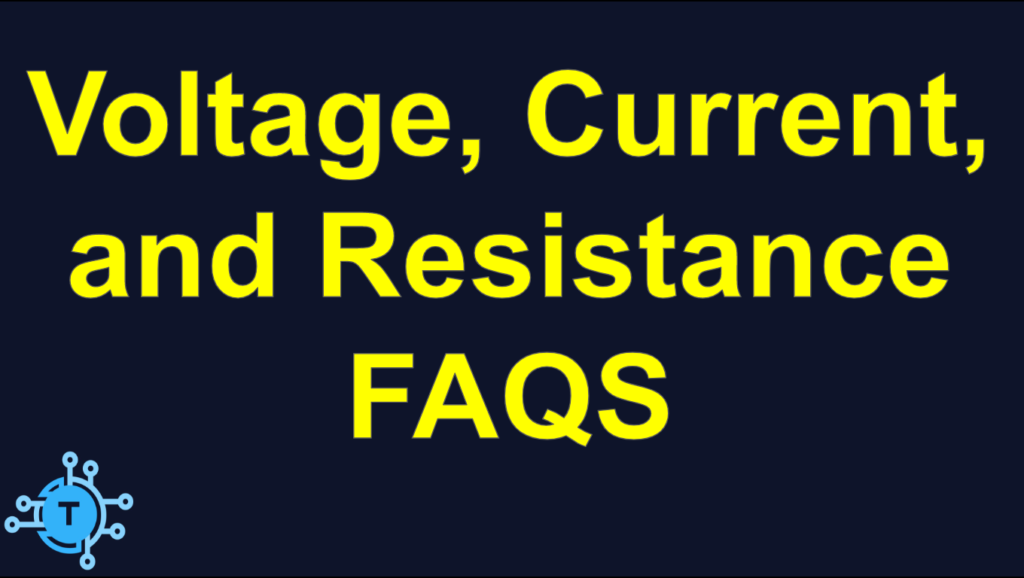
Below is another list in a series of Frequently Asked Questions (FAQS) about electricity and electronics that are oriented toward Appliance Technicians and HVAC Technicians.
Frequently Asked Questions about Voltage, Current, and Resistance
Q. What is Voltage?
A. Voltage is the electromotive force or “pressure” that tends to push charge particles (such as electrons) through a conductive path (such as a copper wire), when a difference of such force exists from one side of that path to the other.
Q. In a water analogy, what is the analog of voltage?
A. Water pressure.
Q. What is a volt?
A. One Volt is is the amount of electromotive force required to push one Amp of current through one Ohm of resistance. It is also known as the amount of Joules of energy per Coulomb of charge (Joules/Coulombs).
Q. What is a Joule?
A. It is a unit of energy. It is equal to the amount of energy required to lift an apple by a height of one meter.
Q. What is a Coulomb?
A. One Coulomb is the unit of electric charge. In simple terms, it is equal to 6.24 x 10¹⁸ charged particles (most often electrons). This is equal to 6,240,000,000,000,000,000 electrons.
Q. What is Current?
A. Current is the actual flow of charged particles (such as electrons) that occurs as a result of electromotive force and is measured in Amps.
Q. What is an Amp?
A. It is the amount of charged particles (such as electrons) that flow through a conductor per second. One Amp is equal to one Coulomb, or 6.24 x 10¹⁸ electrons flowing through a cross-section of a wire per second.
Q. In a water analogy, what is the analog of current?
A. The rate of water flow through a pipe.
Q. What is resistance?
A. It is the opposition to current flow, and is measured in Ohms.
Q. In a water analogy, what is the analog of resistance?
A. A restriction in a pipe, such as a narrowed portion, or a partially closed valve.
Q. How are Voltage, Current, and Resistance related?
A. Voltage, Current, and Resistance are proportional to one another in a way that is described by Ohm’s Law.
Q. What is an ideal voltage source?
A. It is a voltage source with no internal series resistance (or impedance), and is thus capable of supplying an infinite amount of current to a load.
Q. What is a practical voltage source?
A. It is a voltage source with an internal series resistance (or impedance) that limits how much current can be supplied to a load.
Q. What is a current source?
A. It is a power source that supplies a specific amount of current that is independent of the resistance or impedance of the load.
Q. What is an ideal current source?
A. It is a current source that has infinite internal resistance (or impedance).
Q. What is a practical current source?
A. It is a current source that has some internal resistance (or impedance) in parallel with an ideal current source. It can supply a given amount of current within a voltage range that depends on the value of that internal resistance/impedance.
To donate to the Tech Circuit – CLICK HERE
For additional electrical and electronics learning material for field techs, visit our homepage at http://www.TechCircuit.org or our Facebook group at https://www.facebook.com/groups/746823709133603.
TC
We are a participant in the Amazon Services LLC Associates Program, an affiliate advertising program designed to provide a means for us to earn fees by linking to Amazon.com and affiliated sites.
